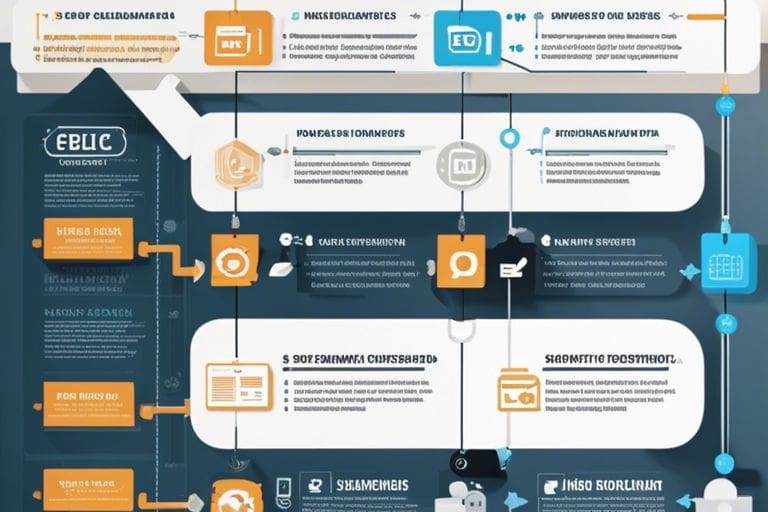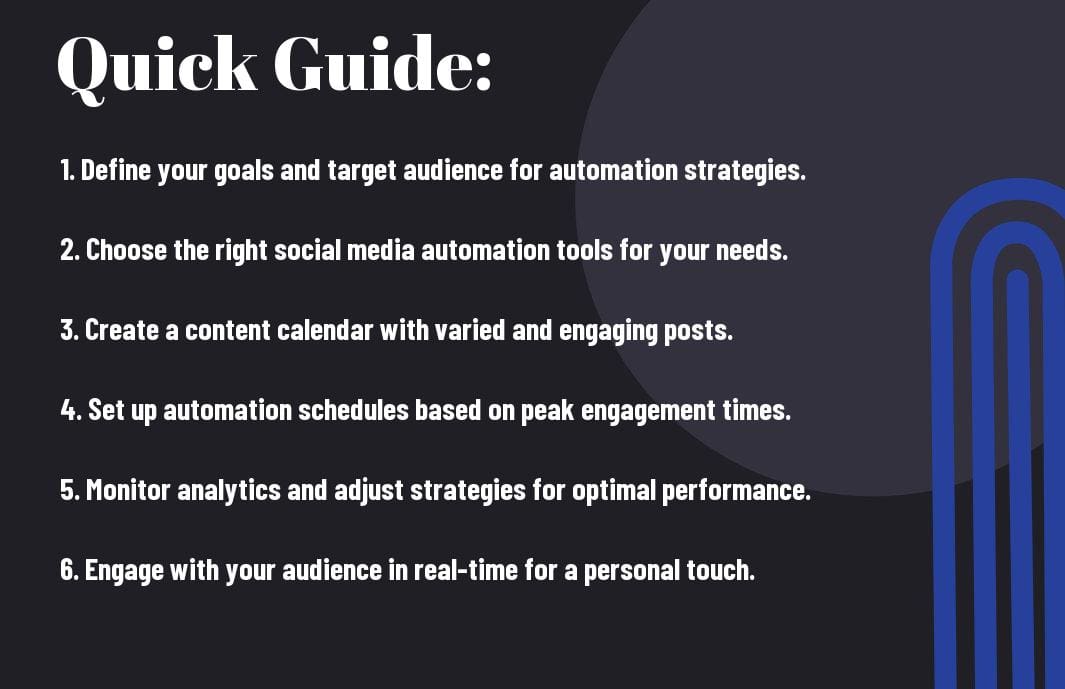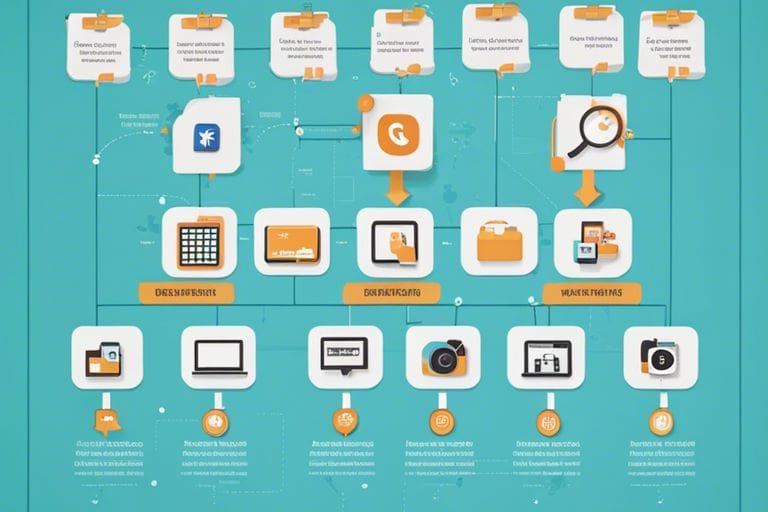There’s no denying the power and efficiency of social media automation in today’s fast-paced digital world. However, without the right strategy, it can easily backfire and damage your brand’s reputation. In this comprehensive step-by-step guide, we will uncover the secrets to achieving social media automation success. From choosing the right automation tools to creating engaging content and maintaining a human touch, we will walk you through the imperative steps to ensure your automation efforts succeed and drive positive results for your business. Stay tuned to discover how to effectively harness the power of automation without compromising on authenticity and engagement.
Key Takeaways:
- Define Your Goals: Before automating your social media, clearly define your goals and objectives to ensure that your automation strategy aligns with your business objectives.
- Choose the Right Tools: Select social media automation tools that suit your specific needs, considering factors like scheduling capabilities, analytics, and integration with other platforms.
- Monitor and Adjust: Regularly monitor the performance of your automated posts, engagement metrics, and audience feedback to make necessary adjustments and improvements to your automation strategy.


Types of Social Media Automation Tools
If you want to excel in social media automation, it is crucial to understand the different types of tools available to streamline your processes. There are three primary categories of social media automation tools: Scheduling and Publishing Tools, Analytics and Reporting Tools, and Content Curation and Management Tools. Each of these tools serves a specific purpose in helping you manage your social media presence effectively.
| Scheduling and Publishing Tools | Analytics and Reporting Tools |
| Sprout Social | Hootsuite |
| Buffer | Google Analytics |
| Later | Facebook Insights |
| CoSchedule | Twitter Analytics |
| MeetEdgar | Instagram Insights |
Scheduling and Publishing Tools
With scheduling and publishing tools, you can plan and automate your social media posts in advance. These tools allow you to set specific times for your content to be shared across various platforms, ensuring consistency in your posting schedule. This helps you save time and maintain a strong online presence.
Analytics and Reporting Tools
Social media analytics and reporting tools provide valuable insights into the performance of your social media campaigns. These tools track key metrics such as engagement, reach, and conversions, allowing you to optimize your strategy for better results.
Understanding the data provided by these tools is crucial for making informed decisions and improving your social media presence. By analyzing the performance of your posts and campaigns, you can identify what is working well and where you need to make adjustments.
Content Curation and Management Tools
Content curation and management tools help you discover relevant content to share with your audience. These tools can suggest articles, images, and videos based on your interests and target audience, making it easier to keep your social media feed fresh and engaging.
Factors to Consider Before Automating Social Media
Despite the numerous benefits of social media automation, there are several factors to consider before diving in. It’s necessary to analyze your brand’s unique needs and characteristics to ensure successful automation. Planning, strategy, and customization are key elements to focus on to make the most out of automation tools.
- On the other hand, poor planning and improper execution can lead to disengagement, irrelevance, and negative brand perception.
- Successful social media automation requires a deep understanding of your brand identity, target audience, and industry trends.
- Thoroughly assess your brand’s capabilities and limitations before implementing automation strategies.
Choosing the Right Platforms for Your Brand
On the journey to social media automation success, selecting the right platforms for your brand is a crucial first step. Consider factors such as your target audience demographics, industry trends, and communication style. Ensure that the platforms you choose align with your brand values and are frequented by your target audience. Devote time to research and analyze each platform’s strengths and weaknesses to make an informed decision.
Assessing Your Social Media Goals and Objectives
For a successful social media automation strategy, you must first define your goals and objectives clearly. Whether it’s increasing brand awareness, driving traffic to your website, or boosting engagement, your automation efforts should align with these goals. With a clear roadmap in place, you can effectively measure the impact of your automation efforts and make necessary adjustments to optimize results.
Step-by-Step Guide to Social Media Automation
All information is broken down into a table for better organization and clarity.
Setting Up Your Automation Tools
Automation tools are important for streamlining your social media efforts. Choose a reliable tool that integrates with all your social media platforms. Set up your posting schedule, define your target audience, and customize your posts to maintain a consistent brand voice.
Creating Your Automation Strategy
Assuming you have your tools in place, it’s time to develop a structured automation strategy. Determine the type of content you want to share, set clear objectives for each platform, and establish key performance indicators to measure success. Identify the best times to post for optimal engagement and make adjustments as needed.
Tips for Successful Social Media Automation
Not utilizing social media automation tools can be a missed opportunity for your business to thrive in the digital age. To ensure success, here are some vital tips to consider:
- 1. Set Clear Goals: Before venturing into automation, define your objectives and what you aim to achieve.
- 2. Quality over Quantity: Focus on creating valuable content rather than bombarding your audience with automated posts.
- 3. Monitor and Adjust: Regularly track your automation efforts and make necessary tweaks to improve results.
Balancing Automation with Human Engagement
Clearly, finding the right balance between automation and human engagement is crucial for a successful social media strategy. While automation can save time and streamline processes, it is vital to remember the importance of authentic interactions with your audience. Ensure that you still engage with your followers through responses, comments, and personal messages to maintain a genuine connection.
Staying Current with Social Media Trends
Engagement with current social media trends is vital to keep your content relevant and engaging. A continuous monitoring of platforms like Facebook, Instagram, Twitter, and LinkedIn will help you adapt your strategy accordingly. Stay updated on the latest algorithms, features, and best practices to stay ahead of the competition.
Assume that, failing to stay informed about social media trends can result in your content becoming obsolete and missing out on valuable opportunities to reach your target audience effectively.
Pros and Cons of Social Media Automation
| Pros | Cons |
| Increases efficiency | Potential for impersonal interactions |
| Consistent posting schedule | Risk of automation errors |
| Time-saving | Loss of authentic engagement |
Advantages of Automating Social Media Tasks
An advantage of automating social media tasks is the ability to streamline your workflow and save time. By scheduling posts in advance, you can ensure a consistent online presence without having to manually post each update. Automation tools also allow for better organization, analytics tracking, and the ability to reach your audience at optimal times.
Pitfalls and Challenges of Over-Automation
Media over-automation can lead to a lack of personalization in your content and interactions. If not done carefully, automation can make your social media strategy appear robotic and detached from your audience. It can also result in missed opportunities for real-time engagement and conversations with followers.
Social media automation, when taken too far, can harm your brand’s reputation. Over-automating can lead to irrelevant or poorly timed posts, which can annoy or alienate your followers. It’s crucial to strike a balance between automation and genuine, human interaction to maintain a positive online presence.
Conclusion
Taking this into account, mastering social media automation is a crucial aspect of any successful digital marketing strategy. By following the step-by-step guide provided, businesses can streamline their social media efforts, save time, and reach a wider audience. Remember to tailor automation tools to your specific goals and audience, monitor performance regularly, and stay up-to-date with the latest trends and platforms. With dedication and careful planning, social media automation can be a powerful tool for increasing brand visibility, engagement, and ultimately, driving conversions.
FAQ
Q: What are the benefits of social media automation?
A: Social media automation streamlines your marketing efforts, saves time, increases consistency in posting, allows for scheduling in advance, and helps in better targeting and personalization of content to reach your audience effectively.
Q: What are some best practices for successful social media automation?
A: To succeed in social media automation, it is crucial to choose the right tools for scheduling and analyzing data, create a content calendar with a good mix of content types, engage with your audience in real-time, monitor and adjust your strategies based on performance metrics, and always prioritize quality content over quantity.
How can I maintain authenticity while using social media automation?
A: To maintain authenticity while automating social media, it’s crucial to personalize your automated messages, interact genuinely with your audience, respond promptly to comments and messages, show the human side of your brand, and use automation as a tool to enhance, not replace, your social media efforts.




